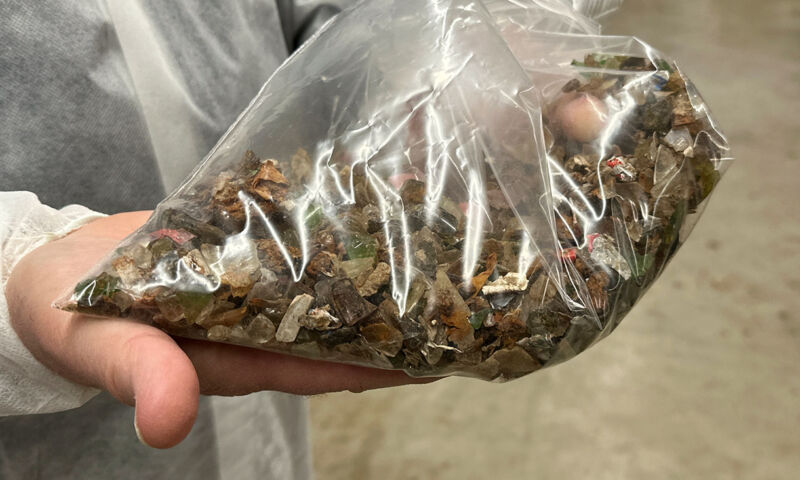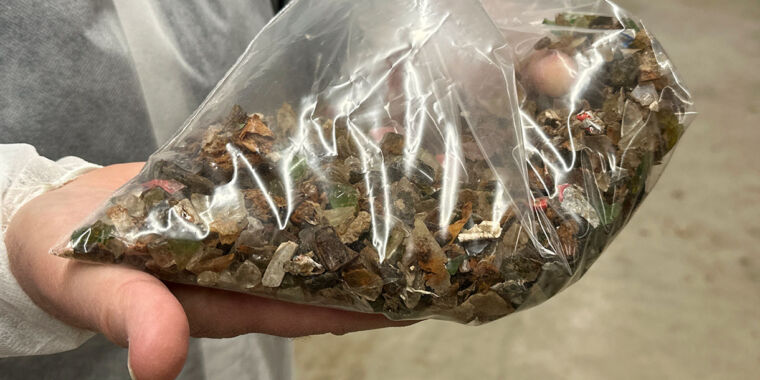“Energy-smart” bricks need less power to make, are better insulation

Enlarge / Some of the waste material that ends up part of these bricks.
Seamus Daniel, RMIT University
Researchers at the Royal Melbourne Institute of Technology (RMIT) in Australia have developed special “energy-smart bricks” that can be made by mixing clay with glass waste and coal ash. These bricks can help mitigate the negative effects of traditional brick manufacturing, an energy-intensive process that requires large-scale clay mining, contributes heavily to CO2 emissions, and generates a lot of air pollution.
According to the RMIT researchers, “Brick kilns worldwide consume 375 million tonnes (~340 million metric tons) of coal in combustion annually, which is equivalent to 675 million tonnes of CO2 emission (~612 million metric tons).” This exceeds the combined annual carbon dioxide emissions of 130 million passenger vehicles in the US.
The energy-smart bricks rely on a material called RCF waste. It mostly contains fine pieces of glass (92 percent) left over from the recycling process, along with ceramic materials, plastic, paper, and ash. Most of this waste material generally ends up in landfills, where it can cause soil and water degradation. However, the study authors note, “The utilization of RCF waste in fired-clay bricks offers a potential solution to the increasing global waste crisis and reduces the burden on landfills.”
What makes the bricks “energy-smart”
Compared to traditional bricks, the newly developed energy-smart bricks have lower thermal conductivity: They retain heat longer and undergo more uniform heating. This means they can be manufactured at lower firing temperatures. For instance, while regular clay bricks are fired (a process during which bricks are baked in a kiln, so they become hard and durable) at 1,050° C, energy-smart bricks can achieve the required hardness at 950° C, saving 20 percent of the energy needed for traditional brickmaking.
Based on bricks produced in their lab, they estimated that “each firing cycle led to a potential value of up to $158,460 through a reduction of 417 tonnes of CO2, resulting from a 9.5 percent reduction in firing temperature.” So basically, if a manufacturer switches from regular clay bricks to energy-smart bricks, it will end up saving thousands of dollars on its power bill, and its kilns will release less CO2 into Earth’s atmosphere. Scaled up to the estimated 1.4 trillion bricks made each year, the savings are substantial.
But brick manufacturers aren’t the only ones who benefit. “Bricks characterized by low thermal conductivity contribute to efficient heat storage and absorption, creating a cooler environment during summer and a warmer comfort during winter. This advantage translates into energy savings for air conditioning, benefiting the occupants of the house or building,” the study authors explained.
Tests conducted by the researchers suggest that the residents of a single-story house built using energy-smart bricks will save up to 5 percent on their energy bills compared to those living in a house made with regular clay bricks.
“Energy-smart” bricks need less power to make, are better insulation Read More »
